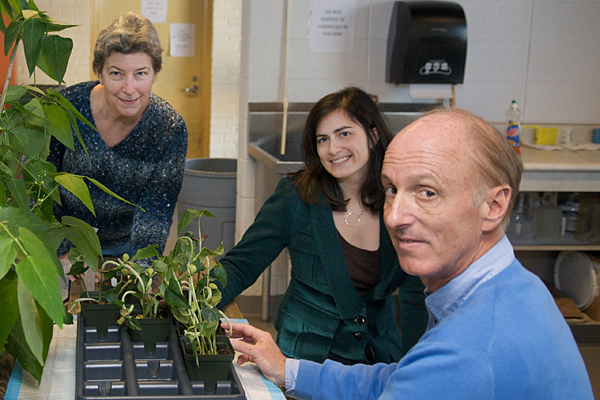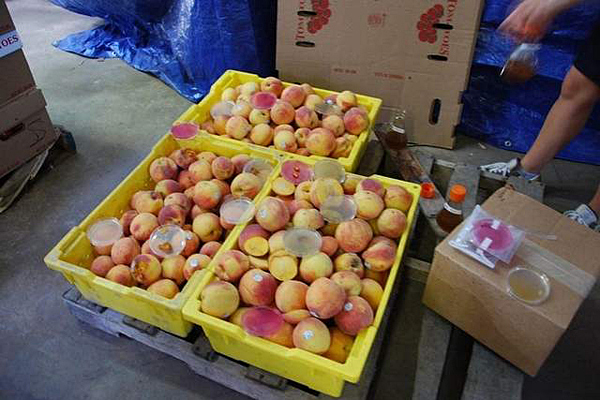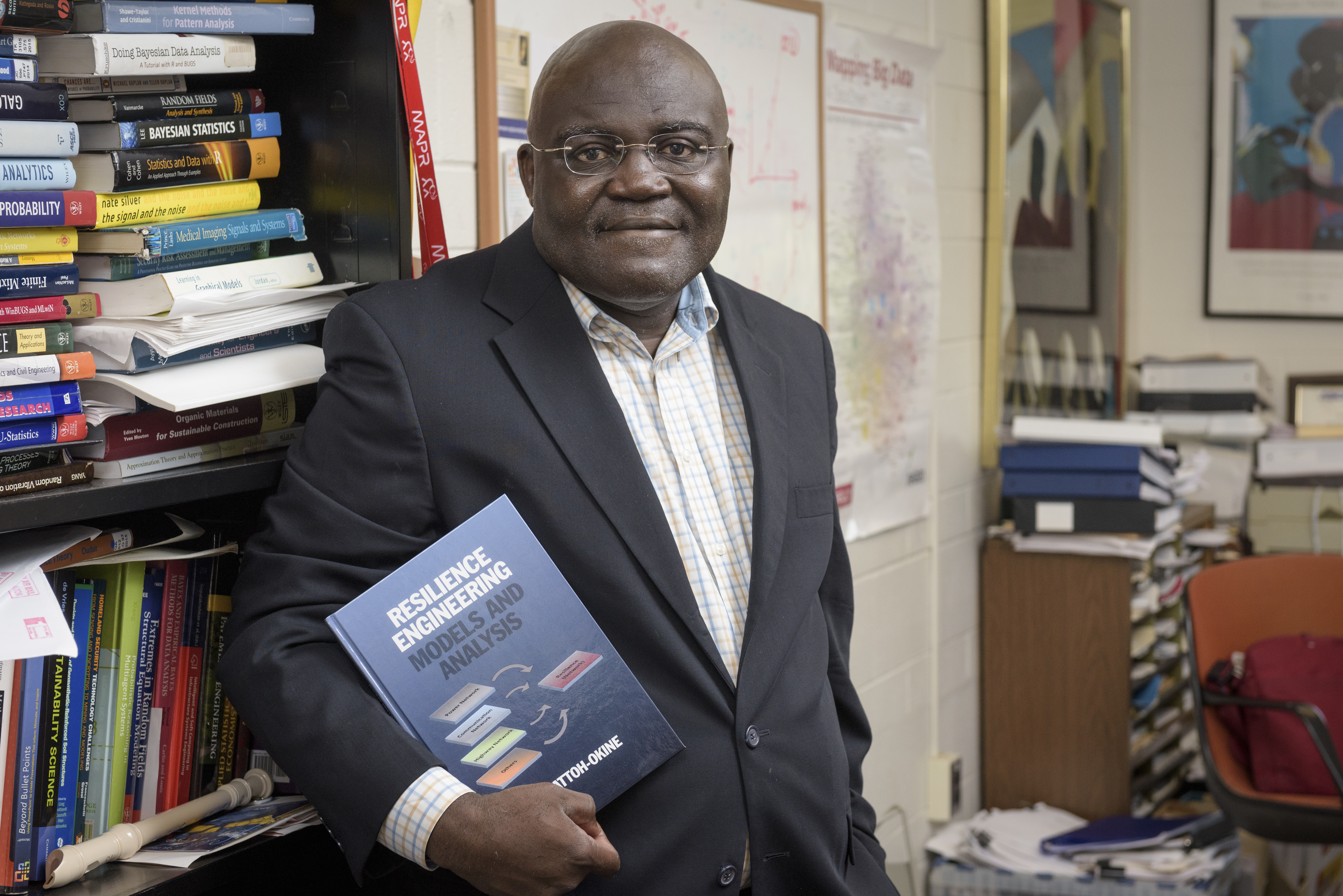


It's in the DNA
UD assists Dogfish Head in developing yeast for Delaware Native Ale
3:14 p.m., Nov. 7, 2011--Delaware is the first state to have its own yeast. Gov. Jack Markell signed a proclamation giving a yeast named Kloeckera (apiculata) (strain KA 1) this designation, which is an honorary title because the state legislature is not currently in session to vote on the matter.
The yeast is the key ingredient in Delaware Native Ale, or DNA, a new, limited-time ale created by Dogfish Head Brewery that features grown-in-Delaware hops, peach and pear juices and other native ingredients. The light ale was introduced recently at a mid-day gathering at the brewery’s pub in Rehoboth Beach.
People Stories
'Resilience Engineering'
Reviresco June run
Tom Evans and Nancy Gregory had every right to feel like proud parents at the event – after all, they isolated the yeast, identified it, and gave it its first home, in laboratories in the University of Delaware’s College of Agriculture and Natural Resources.
Evans is a professor of plant pathology in the Department of Plant and Soil Sciences. Gregory is a Cooperative Extension associate in that department who works closely with Evans on other research projects. She spends most of her days in UD’s Plant Diagnostic Clinic, looking for bad guys -- fungal, bacterial and viral diseases that have shown up on a farmer’s crops or a homeowner’s prized garden plant. After she has identified the pathogen, she and other Extension colleagues usually are able to present solutions for controlling the problem.
But for the Dogfish Head project, Gregory was looking for good guys – yeasts that would make the perfect base for a native Delaware brew. Yeast is the single most important ingredient in beer brewing. As a fungus, it’s a living organism that metabolizes, reproduces and lives off ingredients in beer. During the beer’s fermentation stage, yeast is responsible for converting sugar to alcohol and carbon dioxide. It also plays a large part in what the beer will ultimately taste like.
There are literally thousands of varieties of yeast in the world, notes Gregory, including wild yeasts. Dogfish already possesses a proprietary, cultivated yeast that it uses for the majority of its beverages, according to Katrinka Housley, a lab technician with Dogfish.
But the brewery wanted a wild yeast, native to Delaware, for the new ale. State Secretary of Agriculture Ed Kee steered Dogfish’s brew team to Evans and Gregory for guidance in finding just-the-right yeast.
One day in early August, a team from Dogfish that included Housley, her supervisor, Steven Thompson, and brewery president Sam Calagione, met up with Gregory and Evans at Fifer Orchards, which offered to be the yeast source. Bobby Fifer, a co-owner of the orchards, showed the group around, scoping out good sites. They eventually settled on a few locations to trap yeast, including the packing house, underneath peach trees in the orchard, and near a bunch of hovering fruit flies.
“Fruit flies can be a great source of yeasts,” says Gregory. “They travel to so many different fruits and vegetables and get lots of things stuck on their legs.”
(No worries, Dogfish fans. Fruit fly yeast did not end up in the new ale.)
The group set out about 100 agar plates -- petri dishes containing a growth medium to culture microorganisms. They snacked on Fifer doughnuts for about a half hour while the plates trapped yeasts.
Gregory and Evans then grew and isolated numerous wild yeasts over a period of several weeks in “dirty” and “clean” labs at UD. (As the name implies, the clean lab is kept free of contaminants, while things like a leaf with bacteria or a pumpkin with fungi are allowed inside the dirty lab.)
“At that point in the development of a yeast isolate, you’re weeding through all the chaff to get to the wheat,” notes Evans. “You’re looking at microscopic budding cells under a microscope, separating yeasts from other fungi and bacteria, or other material.”
The UD scientists incorporated their noses into the culling process, too. “Some yeasts smell like bread, some a little fruity and some just plain foul,” says Evans. The stinkers were immediately taken out of the running.
A dozen or so promising candidates for the ale were sent to Dogfish in mid-August. Before they were shipped, Gregory identified each isolated, pure yeast strain through several tests, collaborating with colleagues in CANR and at Delaware Biotechnology Institute.
Once Housley and Thompson had the strains of yeasts on hand they had just a few weeks to see which ones performed best in sample brews that were then tasted by Dogfish’s 37 trained tasters.
“It was challenging working with wild yeast strains,” says Housley. “They are a little more unpredictable than cultivated strains.”
The winning yeast, Kloeckera (apiculata) (strain KA 1) originated in a box of peaches that were “seconds” -- not quite picture perfect and up to Fifer standards.
“As a land-grant institution, UD is committed to working with Delaware’s agricultural producers to improve their profitability,” says Evans. “We’re involved in education, applied research, and outreach to agricultural operations throughout the state. This project was a new one for us, but it certainly fits with our mission.”
And Dogfish was very happy to get the help.
“Tom and Nancy’s brain power and wealth of knowledge were invaluable,” says Thompson.
Evans plans to incorporate information about finding Kloeckera (apiculata) (strain KA 1) into a class he teaches each fall. The students will even get to see a sample of Delaware’s new state yeast, which Gregory has safely stored away in a liquid nitrogen cabinet in the clean lab.
Article by Margo McDonough
Photos by Danielle Quigley and Nancy Gregory









